By Alex Trukan
Transition phases have become increasingly important phases of the game with many teams trying to exploit the moment when the opposition is not organised. Especially transition to attack (including counter attack and quick attack) is being used by many teams around the world as a primary attacking strategy. In response to that, a lot of clubs started to focus on the strategies helping to defend the counter attack and going even further, using the opposition counter-attack as a foundation to start their own attack (counter-pressing). In this article we will have a look at one of the ways to defend the counter-attack and how it impacts individual players, units and the whole team.
Initial reaction to losing the ball
Straight after losing the ball, the team that has lost it has to produce immediate response. The type of response will depend on its organisation (players behind the ball/in front of the ball/opposition/tactics). In simplified terms, if the team is disorganised and has players in front of the ball, it’s weak at the back and vulnerable to the long forward pass. Therefore first response would be aimed at stopping the player on the ball passing forwards. The priority would be to make the opposition play backwards or, if not possible, sideways. That will give time for the players in front of the ball to get back and get organised.
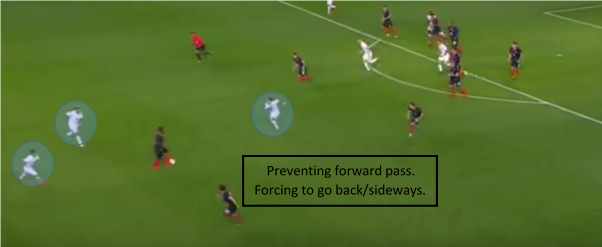
As we can see below, the body position and approach of the defender forces the player on the ball to find a nearest short pass to the full back what gives the defending team time to shift across and set a pressing trap in the wide area.
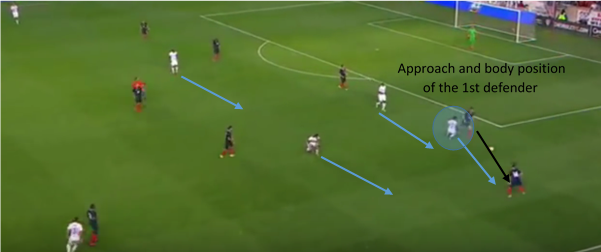
At some point, the opposition might be able to play directly forwards but the crucial aspect is to delay that as long as possible and make it as not dangerous as possible. Also forcing the ball wide will give less options to play a long pass as it reduces the passing range. Here, the role of the players behind the ball, with a special emphasis on the back unit is crucial.
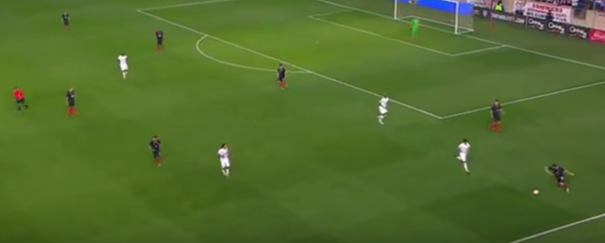
If the opposition can’t play the ball directly forwards, it is useful to set a pressing trap and try to regain possession in that wide area. The role of the players around the ball is to isolate player on the ball and reduce his passing options. This response might be triggered by: bad pass, receiver delayed in getting to the ball, back pass, having players around the ball, body position of the receiver. In this case it is sometimes useful to double up.
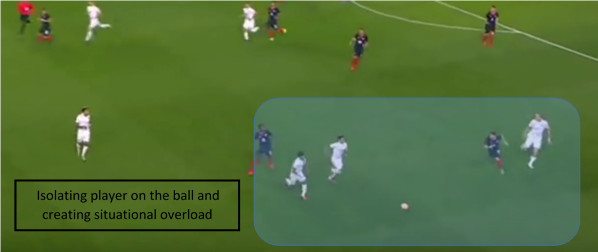
If the opposition wins possession in a situation when the team is already organised or only one or two players are out of possession, the response will be dependent on agreed tactics when ‘organised’. Some teams might prefer to press high, while others would apply their confrontation line on the own half, restricting options to play forwards and patiently forcing the opposition into certain areas of the pitch.
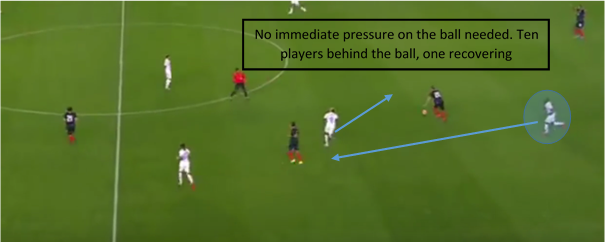
Defending on the own half
There will be times when the opposition brakes through the first pressing line into own half. In that case, the main aim is to delay the opponent and restrict his options. As we can see below, the nearest player to the ball tries to get in between own goal and the ball, while second centre back narrows up slightly and doesn’t commit to go forwards.
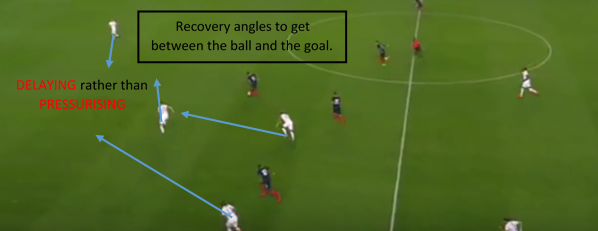
While nearest players to the ball will try to delay the opponent getting in front of the ball, the rest of the players would be recovering back into shape. The priority is to recover into central areas around the ball. The speed of recovery is crucial. There is no room for any laziness and being late.
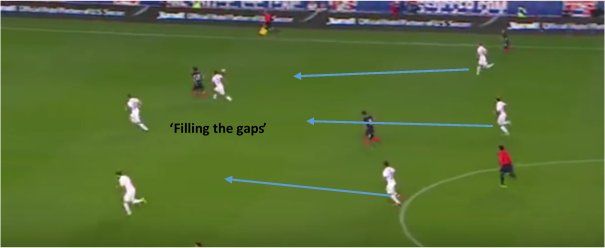
If possible, at the same time as the first player is delaying the opposition, he should try to force them into wide areas away from the goal by appropriate approach and body position. That will impact the recovery runs of other players as well as positions of supporting players.
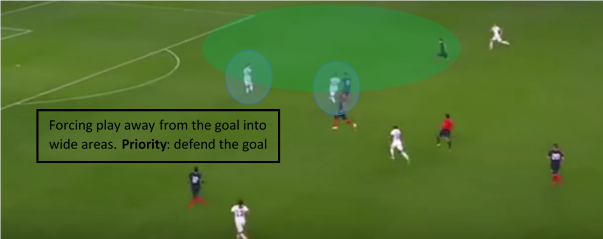
Defending the counter attack is based around prioritising and assessing risks involved. When defending on the own half, it is crucial to protect the space between the ball and the goal. This is the priority and that should be determining positions of the players. As we can see below, the defending players are positioned within the penalty box width protecting the area of the biggest danger.
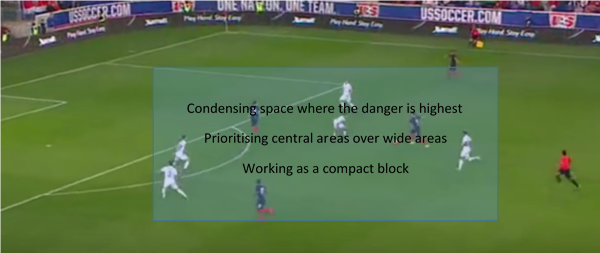
When coaching players on how to defend the counter attack, it is important to remember that a lot of it is based on mental attitude and common sense rather than complex tactics. That is why, the messages should be simple and easy to understand as well as apply on the pitch.
By Alex Trukan, Development Coach, Nottingham Forest
@AlexTrukan


